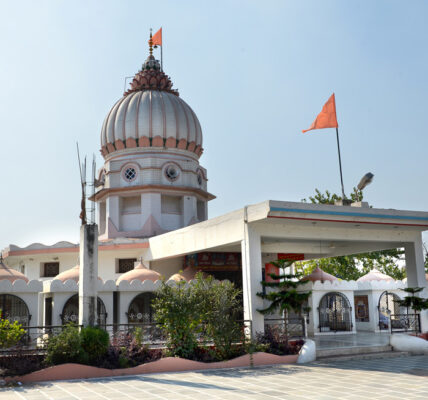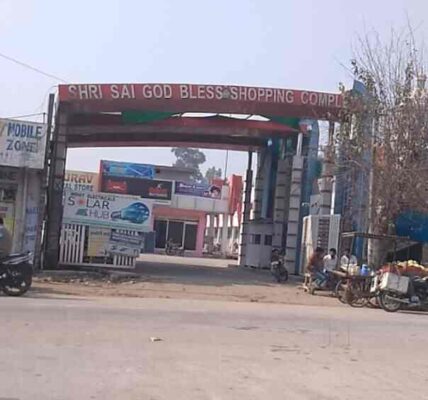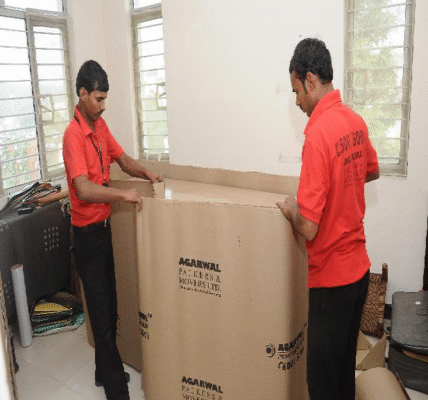Ambala, in the northern Indian state of Haryana is not just a historic city but a strategically important one being the Twin City owing to Ambala City and Ambala Cantonment (Cantt). Besides the richness in culture and business points, the climate and the change in temperatures in Ambala is crucial to life, agriculture, traveling and lifestyle of people.
Being in the geographical location of the Shivalik Hills of Himachal Pradesh and bordering Punjab, the climate of Ambala is continental with scorching summers, chilling winters, and the monsoons creating relief to the hot summer weather.
The article will delve deep into Ambala temperature, weather conditions, seasons, and climatic effects as well as some frequently asked questions to assist the citizenry, tourists, and industries enlighten more about Ambala weather.
Geographic Location & its Effect on the Temperature of Ambala
Ambala is located mid-north of Haryana, near Delhi with Chandigarh, Punjab and Himachal Pradesh. Being at the junction of NH-44 (Delhi Amritsar highway) and NH-152, it is not only a commercial centre, but a climatically vulnerable city as well.
Longitude: 30.38 latitudinal degrees north
Longitude: 76.77 e
Altitude: About 900 ft (274 m) above the sea level
Due to this geographical positioning, the Ambala City experiences continental changes in climates and it is very hot in summer and extremely cold in winters.
Trends in Temperature With Seasons in relation to Ambala
1. Summer (March -June)
Temperature Range: Between 25 to 44 o C
It is very hot with peak temperature in May and June crossing the mark of 42 C in Summers in Ambala.
Hot winds are blowing known as loo that blows during afternoons to make it uncomfortable.
Summer nights occasionally are cooled by rides on the foothills of the Shivalik.
This season is an agricultural influence, and the farmers are greatly depending on tube wells and irrigation.
2. Monsoons (July- September)
Temperature Range: 24 o C to 34 o C
Ambala gets rain fed by the Southwest Monsoon with an average of 1100mm each year.
July and August are the rainiest months with severe showers and waterlogging in the low-lying places.
The amount of humidity gets high and the rain brings out the heat during the summer.
This is the important season of paddy cultivation in the buffer villages.
3. Autumn and post-Monsoon (October – November)
Operating Temperature: -15 to 32 o C
The weather is warm, skies are being clear, and the humidity is slowly declining.
October tends to be very warm in the afternoons but quite cool at evenings
In November, there is a transition to the winter season with minimum temperatures going to 10-12 C.
4. Winter (December (2015) – February)
Temperature: 5oC to 20oC
Winter climate in Ambala is cold with extreme cold waves at sometimes reaching the level of 3-4 C.
The tightness of fog in December and January is a common phenomenon and this blurs visibility and delays deliveries in regards to train and flight schedules.
Frost is visible in the countryside where crops such as mustard and wheat are affected.
It is further aggravated by winds that blow in cold Himalayan winds.
Mean Monthly Temp. at Ambala
Month Avg. High (o C) Avg. Low (o C)
In January, 00 17 o celsius 6 o celsius
February 1 dl1599 core tolerance Bangladesh How to factory make full white pavement stones
March .27Advances in women technology!!!
April 35oC 20oC
May 59 C 25 C
June effluent 41C 28C
July 26 o C 34 o C
August 92 F 25 F
September 33 C minus 24 C
October 31 o C 96 o C
November 12 C 25 C
December 019a strategy
Cimate Characteristics of Ambala
Continental Climate -summers and winters are hot and cold as a result of being far away to the sea.
Healthy Monsoon Rain – It is one of the great rainfalls experiencing cities in Haryana.
Fog in Winters – Fog creates a challenge to visibility and transport.
Dust Storms in Summer -Summer months blow winds with dust.
Extremes of Temperature -Can go up to 44o C in June and as low as 3o C in January.
The Impact of heat on life in Ambala
Agriculture: Wheat, mustard, rice, and sugarcane production are mostly reliant on the weather patterns of temperature and precipitation.
Lifestyle: The summer months mean cooling devices, and winter means woolens and heaters.
Tourism: It is the required time to visit the temples, gurudwaras and markets because the weather in October-March is pleasant.
Transport: Fog commonly interferes with the transportation via trains and flights during winters.
Health: Severe heat causes dehydration and heat strokes, cold waves, on the other hand, can have a respiratory distress.
Best time to visit ambala
The best months are October to March and those are the moderate periods of pleasant temperature.
Summers are mostly avoided because this time is very hot.
Monsoons, which are refreshing, can be an obstacle to travel plans as a lot of rain can fall.
How do I check live temperature in Ambala?
Real-time ambala temperature can be checked:
Weather applications such as AccuWeather, Skymet or Weather.com
Google Weather is updated
Lots of unemployment, local news channels and newspapers
IMD site
Frequently Asked Questions(FAQs) of Ambala Temperature
Q1. What is the hottest temperature in Ambala?
Ambala experiences the maximum summer temperature to be over 44 C mainly during May and June.
Q2. What is the coldest temperature in Ambala?
During the worst winter, the temperature of Ambala reaches between 3-4 o C, and dense fog.
Q3. Does it snow insera in Ambala?
No, snowfall is never experienced in Ambala. Nearby hill stations such as Kasauli and Shimla do, however.
Q4. How much rainfall is average in Ambala?
Ambala gets an annual rainfall of approximately 1100 mm which mainly occurs during the monsoons (JulySeptember).
Q5. When is the best time to visit in Ambala.
October through March is the best time to make a journey, do shopping and visit sights as weather is favourable in these months.
Q6. Is the climate of Ambala suitable to agriculture?
Yes, the rich agricultural land and intermittent rain facilitates the growth of crops, such as wheat, rice, mustard, and sugarcane in Ambala.
Q7. What influence does fog have on Ambala in winters?
This DecemberJanuary high density fog impairs visibility which may interfere with flights, trains, and road traffic.
Q8. Is it more hot over in DELHI than over here (Ambala)!
The temperature in Ambala in summers reaches almost that of Delhi but cooling needs the nearness of Shivalik hills.
Conclusion
Ambala temperature resembles the hot North Indian plain climate i.e. hot summers, fresh monsoon and cold winters. Ambala has a geographical advantage since it is located near Punjab, Himachal Pradesh, so it becomes an important city in terms of trade, defense, and culture.
Calculating local temperature variations of the year in Ambala is helpful to more than just the people living in the location and tourism. No matter what your plans are, whether it is traveling, moving to a new place to study, or launching a business, it is always important to monitor temperature and weather in Ambala in order to make the trip to this exciting city easier.




